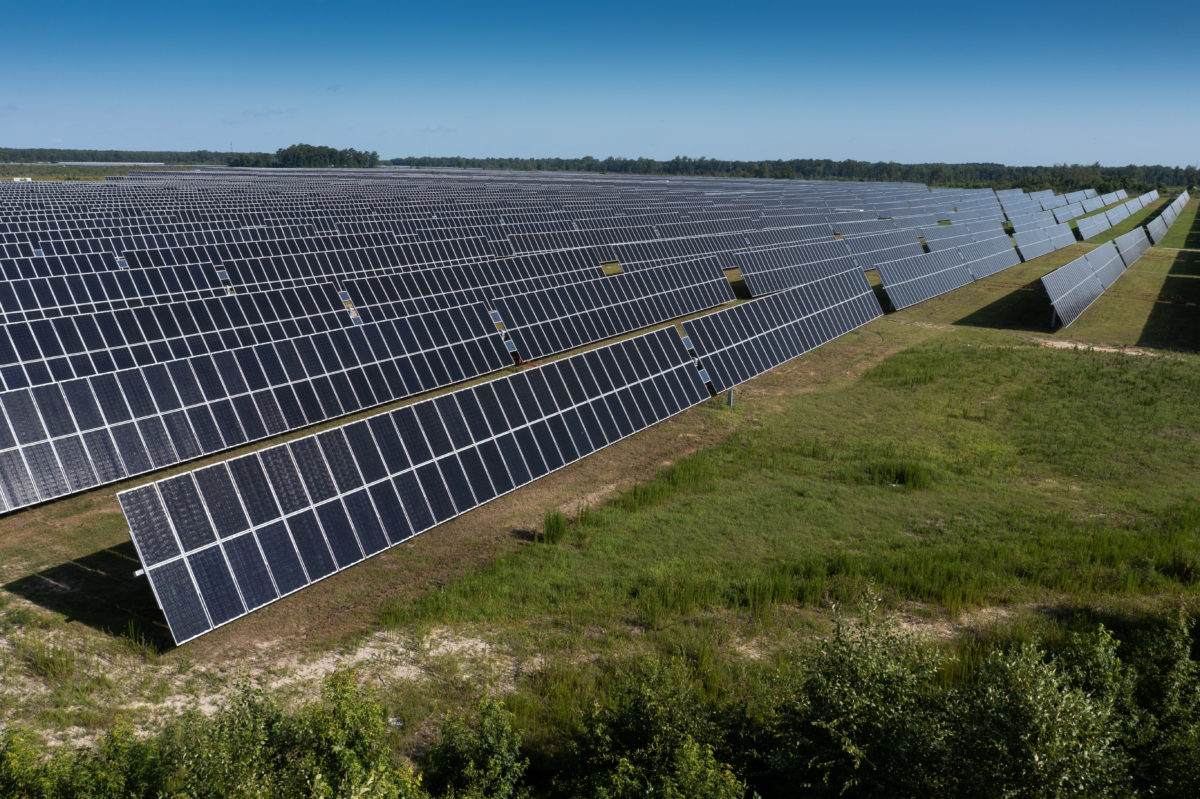While not as immediately captivating in damage potential as lacrosse ball-sized hail or sudden, destructive flooding, the threats that wind poses to solar installations, especially those that utilize single-axis trackers (SATs), is a paramount concern for solar developers, and one that is only growing in import as high-speed wind events become more common and projects expand into areas more prone to high winds.
In the pursuit of maximizing SAT resiliency, FTC Solar has co-authored a whitepaper with wind engineering experts RWDI and structural engineering firm Engineered Power Solutions (EPS) to highlight how the zero-degree wind stow position and proprietary dampening technology used in FTC’s Voyager SAT alleviates the effects of static and dynamic wind loading, preventing catastrophic failure and revenue loss.
Wind and trackers
The two types of wind effects on SATs outlined in the white paper are static and dynamic wind loads. Static loads are the result of constant wind against the SAT structure, while Dynamic loads involve the reaction of the SAT to varying oncoming wind and the interaction of wind with the site creating effects like turbulence.
The interaction between aerodynamic forces and nonrigid structures, the SATs in this example, is known as aeroelasticity. The paper outlines that the aeroelastic nature of SATs means that both static and dynamic behaviors are dependent on the twist of the tracker during operation and on each other. This interaction of static and dynamic wind forces, in a worst-case scenario, can create a snowball effect of aeroelastic instability that can lead to structural damage and even catastrophic failure.
Because of this, as the authors outline, both static and dynamic loads have to be considered when developing tracker hardware and optimal stow strategies.
Making the fix
Traditionally, dynamic and static load consideration has been tackled by using modest amounts of damping to raise the natural frequency that the unit can sustain above the level excited significantly by the wind by stiffening the structure known as underdamping, and to stow at a higher angles, typically 30 degrees. In an underdamped system adding more damping beyond a certain point does not have much impact on stability and the authors state that conventional wisdom has been that only a combination of stiffer structure and stowing at higher angles along with modest damping will ensure stability.
According to FTC, their own research has shown that much larger amounts of damping, overdamping, than traditionally considered create an unexpected result. This amount of damping essentially makes it impossible for practical tracker designs to become unstable even when stowed flat.
While extra damping measures increase overall structural stability, stowing modules in a flat or horizontal position during a wind event has the advantage of reducing normal static wind loads. With the solar panels held flat, the lateral forces acting on the foundation are much smaller than if that panel were vertical or at an angle tilted toward the wind. This means less force on the system overall and it substantially reduces the loads on the modules.
To prove the efficacy of FTC’s theory of overdamping and low-angle stow strategy, RWDI initially performed sensor-based testing by building models of a Voyager 2p system. The intent of this first test was to measure static wind loads. The authors outline that testing was performed with sensors attached to the models recording how these static wind loads affected the structures. They measured what pressures occurred at more than a thousand individual points throughout the array with pressure transducers. This solidified our baseline understanding of static wind forces on the structures.
From those results, FTC developed the highly damped system design utilized in the Voyager tracker systems. Next, RWDI conducted aeroelastic wind tunnel testing to further validate the previous findings.
In aeroelastic wind tunnel testing with wind speeds between 105 and 150 mph, RWDI found that FTC’s overdamping and zero-degree stow strategies led to no divergent dynamic oscillations, which are indicative of aerodynamic instabilities, and that the wind load used only led to normal static rotations of the system.
What FTC attempted in this study was a pretty novel approach in terms of wind mitigation, and the hope is that the efficacy of their solution will hep to give greater understanding into how to improve wind’s relationship with SATs.
“[FTC is the] only company I know of that has incorporated physical dampers into their to-scale wind tunnel models,” said Matt Gilliss of EPS. “It’s become more common to model locks and consider rotations due to aeroelastic effects in wind tunnel modeling, but to incorporate the resistance from dampers into the wind tunnel testing models is something new.”
This content is protected by copyright and may not be reused. If you want to cooperate with us and would like to reuse some of our content, please contact: editors@pv-magazine.com.









By submitting this form you agree to pv magazine using your data for the purposes of publishing your comment.
Your personal data will only be disclosed or otherwise transmitted to third parties for the purposes of spam filtering or if this is necessary for technical maintenance of the website. Any other transfer to third parties will not take place unless this is justified on the basis of applicable data protection regulations or if pv magazine is legally obliged to do so.
You may revoke this consent at any time with effect for the future, in which case your personal data will be deleted immediately. Otherwise, your data will be deleted if pv magazine has processed your request or the purpose of data storage is fulfilled.
Further information on data privacy can be found in our Data Protection Policy.